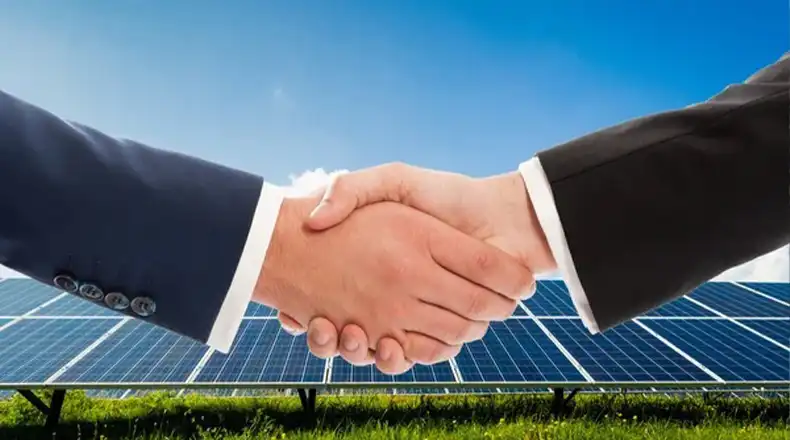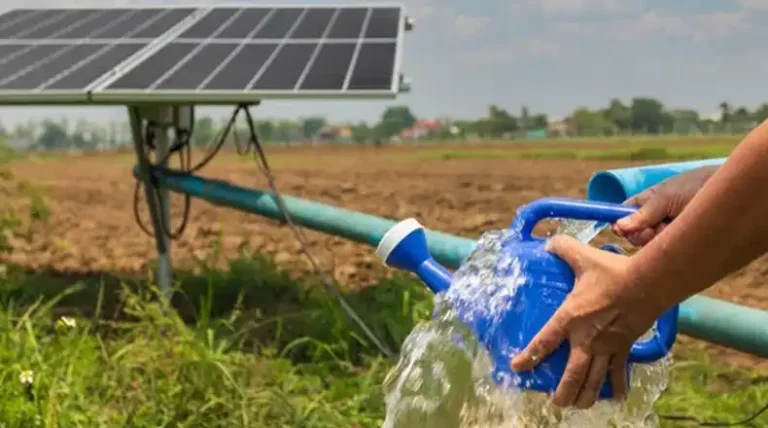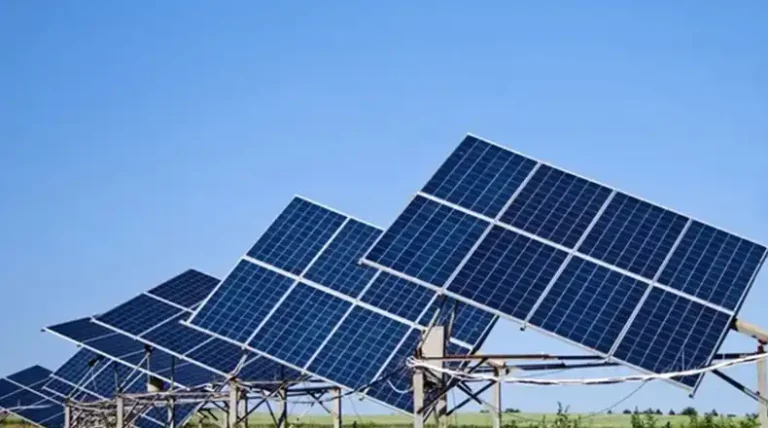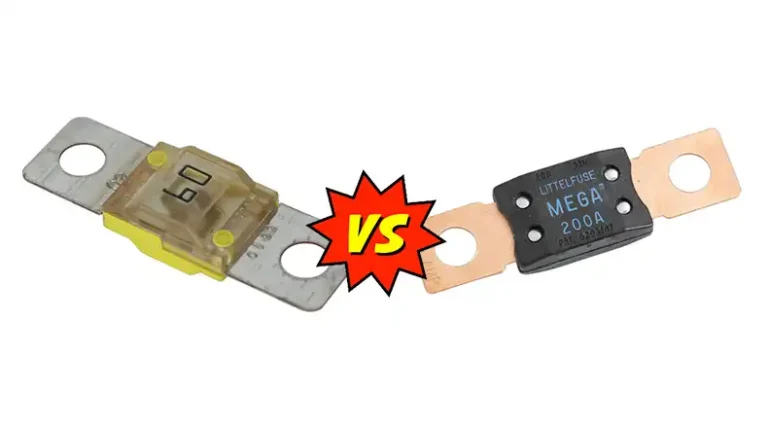What is a Solar Power Purchase Agreement PPA
A solar power purchase agreement (PPA) is a financial arrangement in which a third-party developer installs and owns a solar energy system on a customer’s property, and the customer agrees to purchase the electricity generated by the system from the developer for a predetermined period, usually 20-25 years. This agreement allows the customer to benefit from renewable energy without the significant upfront costs of purchasing and installing the system themselves.

Who Are Involved in a PPA
- Solar Developer/Installer: The company responsible for designing, financing, installing, and maintaining the solar energy system throughout the PPA term.
- Host Customer: The property owner where the solar system is installed. This can be a residential homeowner, a commercial business, or an industrial facility.
Benefits of Solar PPAs
One of the primary advantages of solar PPAs is the potential for significant cost savings on electricity bills. By locking in a predetermined rate for the solar-generated electricity, customers can often achieve lower costs compared to traditional utility rates, especially in areas with high electricity prices.
Cost Savings on Electricity Bills
Solar PPAs are designed to offer electricity at a lower rate than the customer’s current utility rates, potentially resulting in substantial savings over the contract term.
Additionally, depending on the location and available incentives, customers may also benefit from tax credits or other financial incentives for using renewable energy.
Limited Upfront Costs
The most significant advantage of a solar PPA is that it eliminates the need for a large upfront investment in purchasing and installing a solar system. The developer bears the costs of financing, installing, and maintaining the system, allowing customers to access clean energy with little to no upfront expenditure.
Financing Options for PPAs (If Applicable)
Solar PPAs are often structured using a third-party ownership model, where the developer owns the solar system and sells the electricity to the customer through the PPA. This model allows the developer to take advantage of tax credits and other incentives, which can help offset the initial costs and make the project more financially viable.
Potential Tax Credits and Incentives
Depending on the location and available programs, developers may be eligible for various tax credits and incentives related to the installation of solar energy systems. These incentives can help reduce the overall cost of the project and potentially result in lower PPA rates for the customer.
How Solar PPAs Work
1. Initial Consultation with Solar Developer
The process begins with the customer contacting a solar developer or installer to express interest in a solar PPA. The developer will assess the property’s suitability for solar, including factors such as roof orientation, shading, and energy consumption patterns.
2. System Design and Installation
If the property is suitable, the developer will design a customized solar energy system to meet the customer’s energy needs. The developer will then handle the installation process, including obtaining necessary permits, interconnecting the system to the grid, and ensuring compliance with local regulations.
3. Electricity Purchase Agreement Details
Once the system is installed, the customer and developer will enter into a solar PPA contract, which outlines the terms of the agreement. This includes the predetermined rate at which the customer will purchase the solar-generated electricity, the duration of the contract (typically 20-25 years), and any escalation clauses that adjust the rate over time.
4. Long-term Maintenance and Repairs
Throughout the PPA term, the developer is responsible for maintaining and repairing the solar energy system as needed, ensuring it continues to operate efficiently and generate electricity as expected.
Solar PPAs vs. Owning Solar Panels Outright
While owning solar panels outright can provide long-term financial benefits and potential returns on investment, it requires a significant upfront capital investment. In contrast, solar PPAs eliminate the need for upfront costs but may result in lower overall savings over the contract term.
Solar PPAs vs. Solar Leases
The main difference between a solar PPA and a solar lease is the ownership of the system. In a PPA, the developer owns the system and sells the electricity to the customer, while in a lease, the customer leases the system from the developer but does not purchase the electricity generated. Additionally, solar leases may have different tax implications for the customer.
Who is a Good Fit for a Solar PPA?
Solar PPAs can be an attractive option for a wide range of customers, including:
- Residential homeowners: For homeowners with suitable roof space and a desire to reduce their carbon footprint and electricity costs, a solar PPA can be an excellent choice. It allows them to benefit from solar energy without the significant upfront investment required for purchasing a system outright.
- Commercial and industrial businesses: Businesses with large energy consumption and available roof or ground space can take advantage of solar PPAs to lower their operating costs and meet sustainability goals. PPAs offer a way to access renewable energy without diverting capital from core business operations.
- Non-profit organizations and government entities: Solar PPAs can be particularly appealing for non-profit organizations and government agencies with limited budgets. By avoiding upfront costs and locking in predictable electricity rates, these entities can allocate their resources more effectively while contributing to environmental initiatives.
Conclusion
Solar power purchase agreements offer a unique opportunity for customers to access clean, renewable energy without the significant upfront costs associated with purchasing and installing a solar system. By entering into a PPA, customers can enjoy cost savings on electricity bills, limited upfront expenditures, and the potential for additional financial incentives.
Common Questions and Answers about Solar PPAs
What happens if I want to sell my property before the PPA term ends?
Most PPA contracts include provisions for transferring the agreement to the new property owner. The new owner can either assume the remaining term of the PPA or negotiate a buyout with the solar developer.
Are there any maintenance costs associated with a solar PPA?
No, the solar developer is responsible for all maintenance and repair costs related to the solar energy system throughout the PPA term.
Can I purchase the solar system outright after the PPA term ends?
Yes, many PPA contracts include an option for the customer to purchase the solar system at a predetermined fair market value or nominal fee once the contract term expires.
What happens if the solar system doesn’t generate as much electricity as estimated?
Reputable solar developers typically provide production guarantees, which ensure that the customer receives compensation or bill credits if the system underperforms.
Can I terminate a solar PPA early?
Early termination clauses and associated fees are usually outlined in the PPA contract. However, it’s generally advisable to carefully evaluate the long-term implications before entering into a PPA.






![What is Solar Charge Controller Max Input Voltage [Answered]](https://www.itekenergy.com/wp-content/uploads/2024/03/What-is-Solar-Charge-Controller-Max-Input-Voltage-768x428.webp)